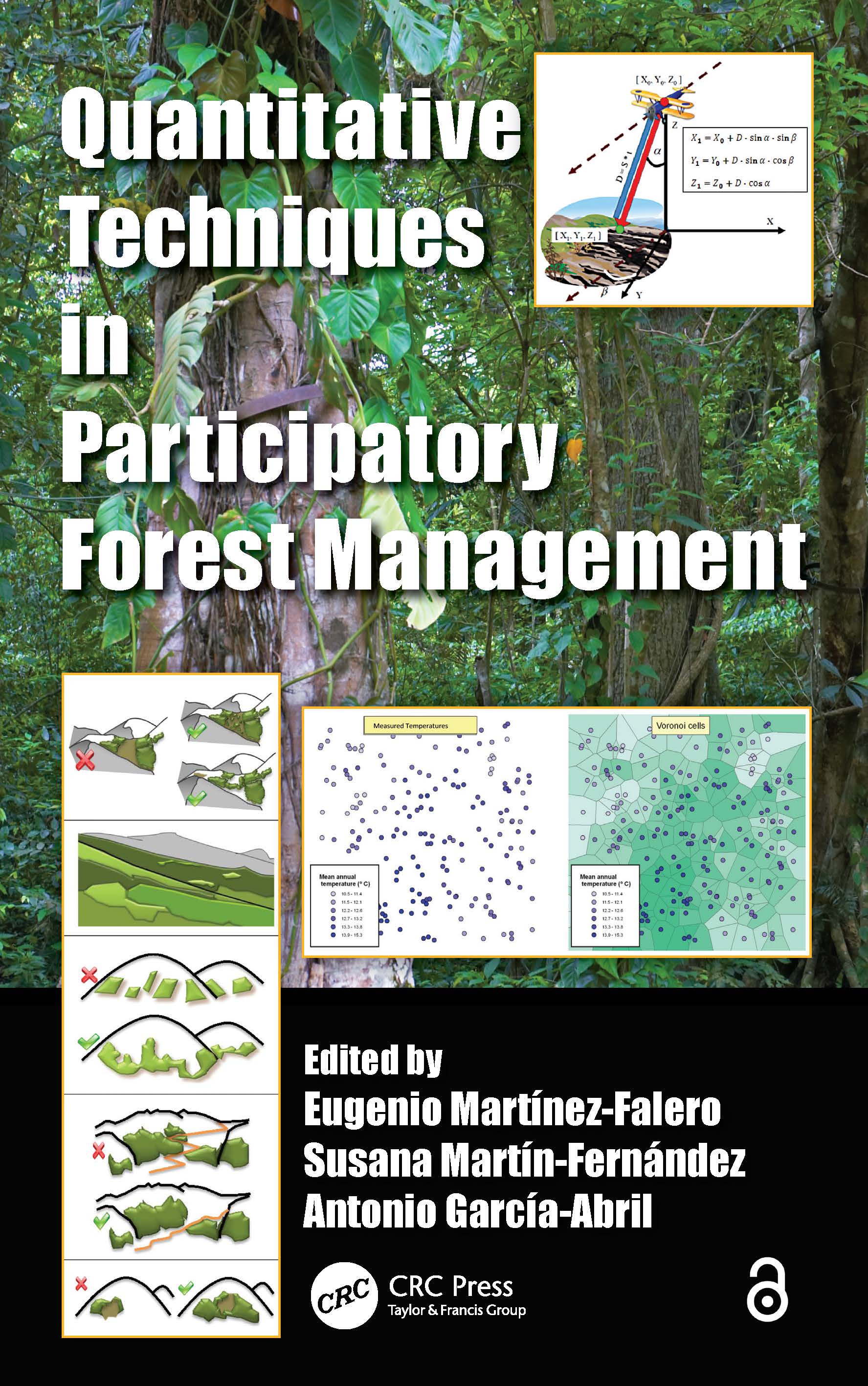Quantitative Techniques in Participatory Forest Management
Edited by Eugenio Martinez-Falero, Susana Martin-Fernandez,Antonio D. Garcia-Abril
Descriptions:
Forest management has evolved from a mercantilist view to a multi-functional one that integrates economic, social, and ecological aspects. However, the issue of sustainability is not yet resolved. Quantitative Techniques in Participatory Forest Management brings together global research in three areas of application: inventory of the forest variables that determine the main environmental indices, description and design of new environmental indices, and the application of sustainability indices for regional implementations.
The book outlines a public participatory process to assess sustainability in forest management. It explores a new approach that links human and natural systems, reconsiders our interdependence with the diversity of life, and recognizes our role in a unique and complex system. The book also identifies quantitative indices that provide a vast amount of information on soil, landscape, and ecological functioning. It highlights the importance of these indices for public information programs on participatory processes and provides an operating procedure to identify the degree of convergence in the utility of multiple evaluators.
The last chapter describes a downloadable computer application that integrates the techniques explained in the book. Users accessing the application are offered a map representing their preferred forest management plan in the study zone. They are also given a map with the results of their corresponding community of evaluators, including the numerical and qualitative data for both. The system stores a record of the visit, including the visitor's profile and responses, to progress towards the joint forest management plan.
The quantitative techniques highlighted in this book create the basis for the development of scientific methodologies of participatory sustainable forest management. It details the methodology for the design of a forest management plan that best suits a specific preference system.
Contents:
Forest Sustainability and Public Participation, Fernando García-Robredo, Eugenio Martínez-Falero, Sigfredo Ortuño, and Rosario Tejera
Inventory Techniques in Participatory Forest Management, Cristina Pascual, Francisco Mauro, Ana Hernando, and Susana Martín-Fernández
Criteria and Indicators for Sustainable Forest Management, M. Victoria Núñez, Rosario Tejera, Antonio García-Abril, Esperanza Ayuga-Téllez, and Eugenio Martínez-Falero
Soil-Quality Indicators for Forest Management, Fernando Arredondo-Ruiz, Luis García-Montero, Inmaculada Valverde-Asenjo, and Cristina Menta
Functionality Indicators for Sustainable Management, José Antonio Manzanera, Susana Martín-Fernández, and Antonio García-Abril
Landscape Indicators for Sustainable Forest Management, Antonio García-Abril, M. Victoria Núñez, M. Angeles Grande, M. Dolores Velarde, Particia Martínez-Obispo, and Roberto Rodríguez-Solano
Assessment of Sustainability Based on Individual Preferences, Eugenio Martínez-Falero, Susana Martín-Fernández, and Antonio Orol
Optimization Methods to Identify the Best Management Plan, Susana Martín-Fernández, Eugenio Martínez-Falero, and Miguel Valentín-Gamazo
Multiparticipant Decision-Making, Esperanza Ayuga-Téllez, Concepción González-Garcia, and Eugenio Martínez-Falero
A Computer-Based Decision-Making Support System to Incorporate Personal Preferences in Forest Management, Eugenio Martínez-Falero, Antonio García-Abril, Carlos García-Angulo, and Susana Martín-Fernández
For more information: http://www.routledge.com/books/details/9781466569249/









0 Comment :
Post a Comment
Thanks for your comment!